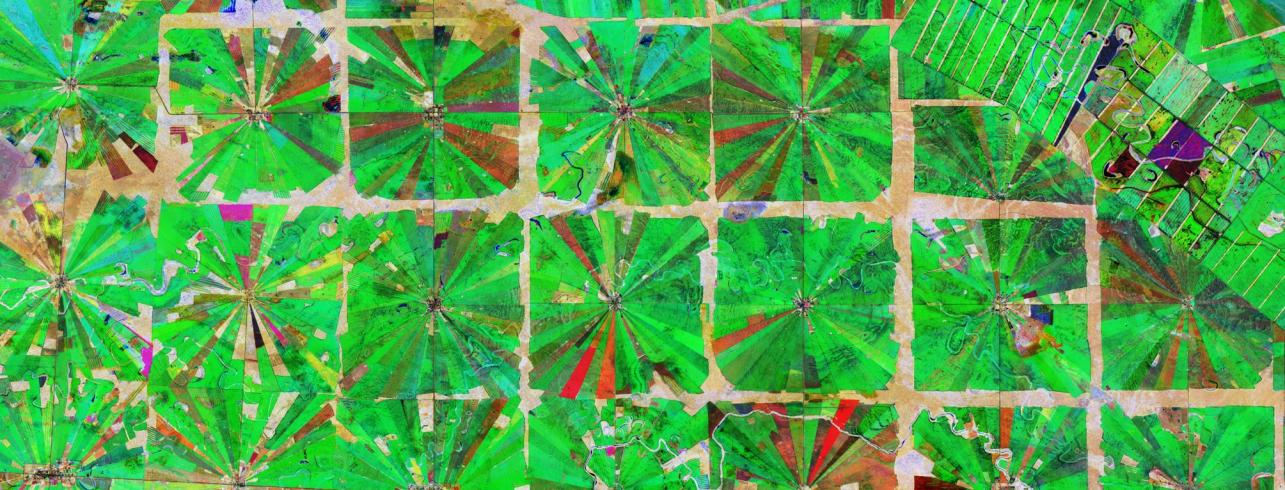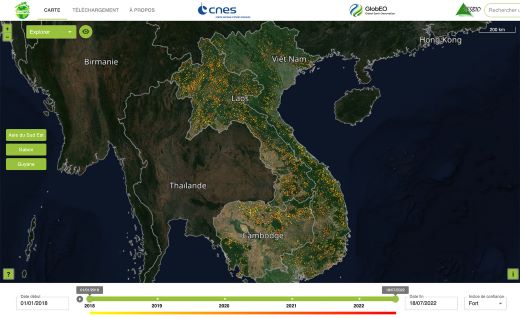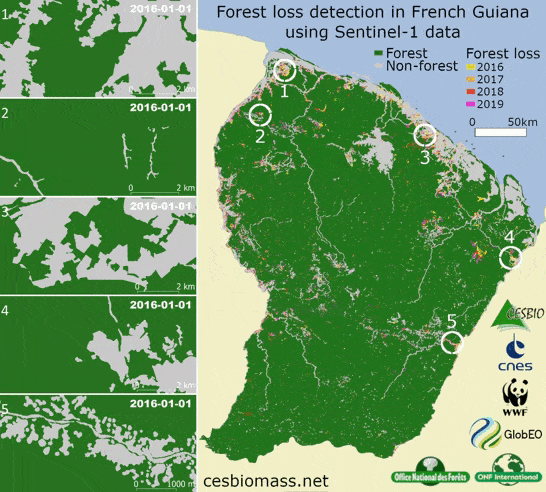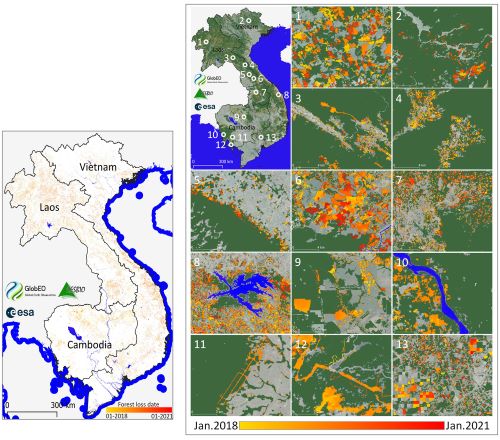
The TropiSCO project, labelled SCO in 2021, aims to map deforested areas using Sentinel-1 radar data every 6 to 12 days, regardless of weather conditions, and to publish the information so that local actors can intervene, alert public opinion, and account for lost surfaces. The data dissemination platform is developed to visualise the evolution of deforestation since 2018 in seven experimental areas deployed on three continents : Guyana-Suriname-French Guiana in South America, Gabon in Africa and Vietnam-Laos-Cambodia in Southeast Asia. All the world’s dense tropical forests will be eventually monitored in the frame of the TropiSCO project.
Compiling thousands of images on a weekly basis, the platform brings up monthly and annual statistics available for each territory. Governments, NGOs, fire monitors, universities, the general public and companies wishing to reduce the risk of deforestation in their supply chains can benefit from the easily usable and free data and statistics made available in the platform. These can be downloaded directly in Geotiff format or browsed via the WMS protocol.
The maps provide clear hints of the spatial and temporal distribution of forest losses, prevalent and occurring everywhere. The results highlight the fact that the method provides not only quick alerts, but also reliable detections that can be used to calculate weekly, monthly, or annual forest loss statistics at the national scale. Specific areas of the whole forest loss map show to what extent forests are cut mostly for commodities, infrastructure construction, logging, tree, sugarcane, coffee, cashew, timber and rubber plantations …



